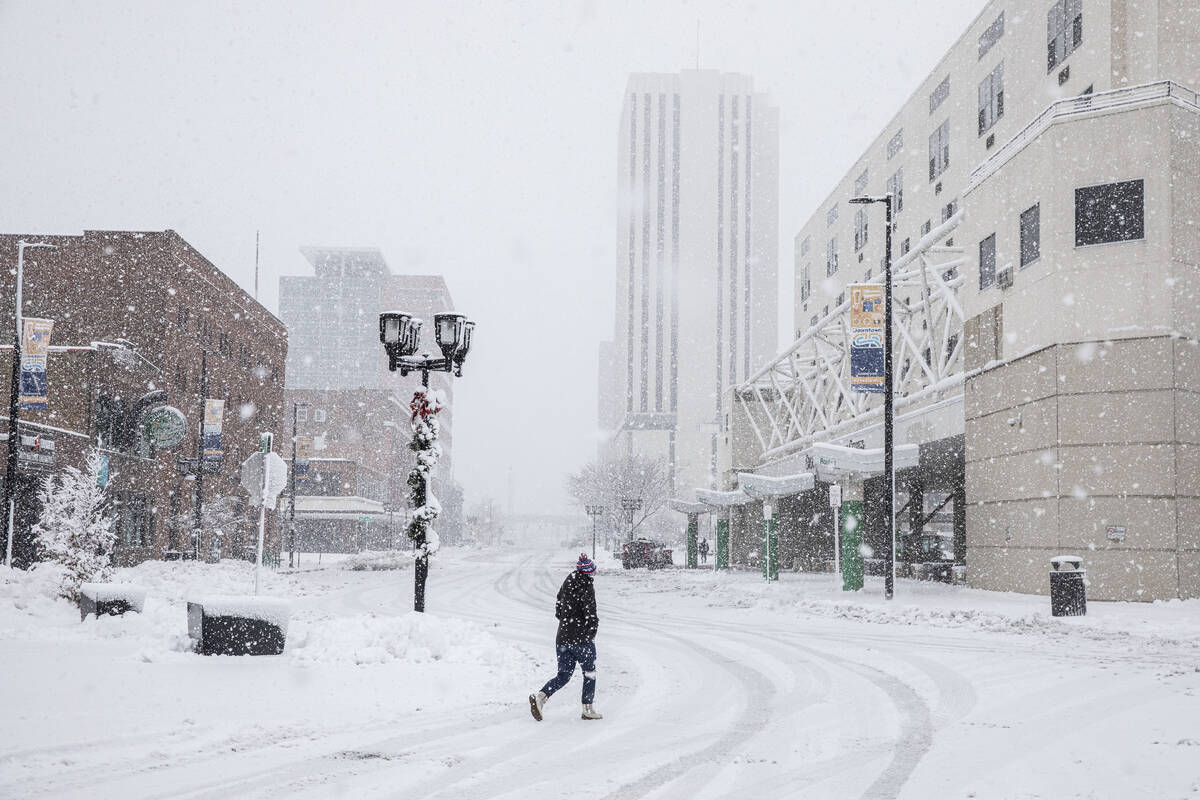VICTOR JOECKS: Polar vortex shows need for fossil fuels
Global warming hysteria is why millions of American now have to worry about freezing to death.
A major cold front is sweeping the nation. The central and eastern parts of country endured two large storms this week. A third is moving across the country. This polar vortex froze the Northwest and even left a trace of snow in some Las Vegas foothills Thursday morning. It’s likely to bring a significant snowfall to the plains and Midwest, qualifying as a bomb cyclone. The Northeast is then expected to receive snow or a heavy rainfall.
It’s during weather such as this that it’s most important to have working utilities. When it’s this cold, home heating is a matter of life and death. Most homes rely on natural gas or electricity for heat. The days of the wood-burning stove being the main heat source are long gone.
In 2021, millions in Texas lost power during a similar winter storm. The death toll ended up around 250. Almost two-thirds of the deaths were from hypothermia.
One would expect that reliability would be the priority of utility companies and the politicians regulating them. Nope. In many places, such as Nevada, what’s most important is eliminating carbon emissions. Nevada voters approved a 50 percent renewable portfolio standard by 2030. California wants to reach “net zero” by 2045. These laws skew the types of power plants being built. Coal power, which is extremely reliable, is out. Natural gas is frowned upon by many environmentalists, but it’s necessary to back up unreliable renewable sources.
Even in red states, such as Texas, federal subsidies skew the market in favor of new wind and solar plants. Regulations also dramatically increase costs for fossil fuel plants.
With its thumbs on both sides of the scale, the government has dramatically shifted how power is produced in the United States. The country is moving from reliable to intermittent sources of electricity.
When conditions are perfect, this isn’t a problem. But it’s foolish to plan only for ideal conditions. Things go wrong. The temperature drops dramatically or it tops 110 degrees during summers in Las Vegas. The wind stops blowing. The sun stops shining.
During its 2021 blackout, Texas lost half of its capacity from wind and other renewable-energy sources. Wind turbines can be winterized, but it was considered too costly for Texas. Most of the power during the emergency came from natural gas, although it had problems, too.
“Will the Texas grid hold up in the freeze? Experts give their confidence scores,” a CBS Dallas headline on Thursday read. Beth Garza, a former independent monitor of the Electric Reliability Council of Texas, put her confidence level at a 7 out of a 10. “We don’t have enough supply to meet the demand in a situation like we had three years ago,” she said.
This is nuts. It’s the same problem Nevada and California have when it gets too hot. These are avoidable problems. Just because you can’t predict when an outlier weather event will occur doesn’t mean their occurrence is unpredictable.
Build reliable power plants to handle the weather instead of imagining you can meet energy needs with renewables.
Contact him at vjoecks@reviewjournal.com or 702-383-4698. Follow @victorjoecks on X.


















